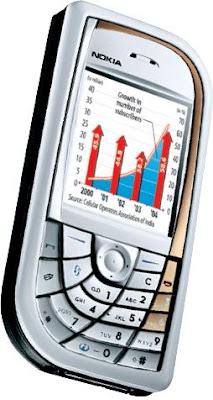IIPM PUBLICATIONFinally, India plunges into the great game of the 21st century History

may be kind or cruel, but it is always replete with twists, turns and delicious ironies. In 1973, when the American President Richard Nixon was hunting for someone to contain the strategic threat from a nuclear armed patently hostile Soviet Union, China happened to be in the right place at the right time. The subsequent entente between the US and China changed the course of history. In 2006, when American President George Bush was hunting for someone to contain the emerging strategic threat from a nuclear armed latently hostile China, India happens to be in the right place at the right time. And the spanking new strategic partnership between the US and India will surely change the course of history once again. In fact, America’s gesture of friendship towards India goes far beyond the entente that it established with China.
Without any doubt, the nuclear deal signed by India and the United States will ignite fire storms of anxiety across nations that would not be delighted with India’s emergence as a global super power in the 21st century.
Lobbyists and lobby firms in Washington are going to make a killing this summer. China will try damned hard to ensure that the $500 million a year it spends on lobbying in Washington is leveraged to scuttle the historic nuclear deal between India and the United States. Pakistan, too, has a formidable lobby in the US State Department and Pentagon, which will be used to kill the deal. Then again, India will have to contend with non-proliferation fundamentalists like Daryl Kimball, Executive Director of Washington-based Arms Control Association, who mutters on: “The (US) Congress and the members of the voluntary 45-member Nuclear Suppliers Group should not accept the deal as proposed and should press India to halt its production of fissile material for nuclear weapons.”
Of course, it is not as if India is bereft of friends and well wishers in Washington, prominent among them being Chief Executives of Fortune 500 companies, who want to do business with India. Union Commerce Minister Kamal Nath dramatically announced in a public platform after the nuclear deal was signed: “The US India Business Council (USIBC) has said that they will be taking up this issue in Washington DC with their Congress that the nuclear energy agreement is in the interest of the US and not ours.”
In an interview to the news channel CNN-IBN, international columnist Fareed Zakaria had this to say about the prospects of the US Congress giving a thumbs up to the nuclear deal: “There will be a core group of the non-proliferation types, who will oppose the deal. But at the end of the day, I think the President will get his way.”
There is a possibility that a politically weak George Bush may not have the clout to carry skeptical members of the Congress. Yes, the deal might be blocked in Washington. Still, the real story is the arrival with a bang of India as a global player that the world can no longer condescendingly ignore. B&E had earlier categorically forecasted that 2006 will be the year in which India will take a formal bow on the global stage; that the blinkered bracketing of India with Pakistan will be buried with state honours. Says Infosys CEO Nandan Nilekani:” India stands on the cusp of history and the world cannot afford to ignore India anymore”.
The statement by Secretary of State, Condoleezza Rice, after George Bush and Manmohan Singh shook hands on the nuclear deal, made it abundantly clear how impossible a similar nuclear deal with Pakistan was: “This is not the time for such an arrangement with Pakistan. Everyone knows that there have been concerns in terms of proliferation with Pakistan.” And Bush’s historic democratic- kick to Musharraf ’s nuclear ambitions, during Bush’s last leg visit to Pakistan on March 4, 2006, simply drove the point home and beyond that Pakistan is beyond the pale on nuclear issues.
Milestones 1950s:

Uncle Sam frowns atypically as India preemptively launches the Non-Aligned Movement
1962: The US pressurises China to halt invasion into India and mulls direct military assistance to India
1965-67: The US gives massive food aid to India after a famine
1971: The US openly sides with Pakistan in the Indo-Pak war. India inks treaty with Soviet Union
1974: India explodes nuclear bomb and Washington immediately imposes a harsh sanctions regime
1979: Soviet Union invades Afghanistan; India supports the move and Washington is disgusted
1991-98: India launches economic reforms; and recognises Israel. USA puts critical roadblocks to thwart India’s missile programmes
1998: India conducts nuclear tests; sanctions re-imposed by the US
21st century: The rapprochement begins between the two
For Complete IIPM Article, Click on IIPM Article
Source : IIPM Editorial, 2007
An IIPM and Professor Arindam Chaudhuri (Renowned Management Guru and Economist) Initiative
For More IIPM Info, Visit Below....
! IIPM Alliances ! IIPM Ranking ! IIPM Director's Desk ! IIPM Dean's Message ! History of IIPM ! IIPM Amaze'07 !
